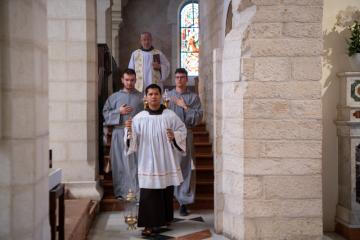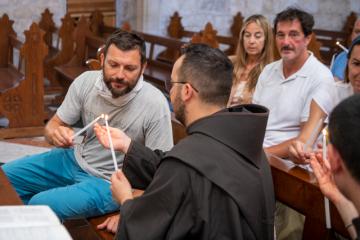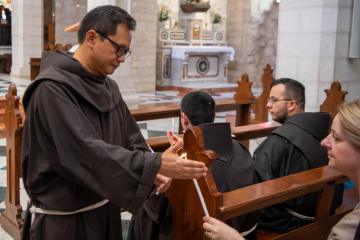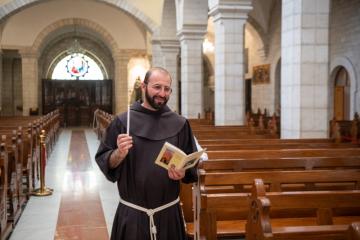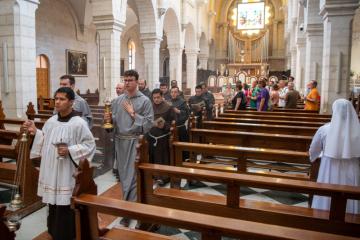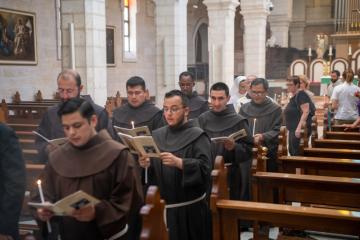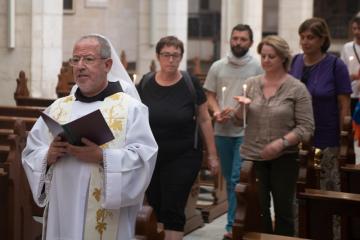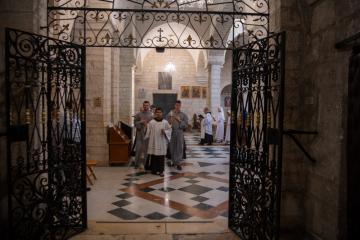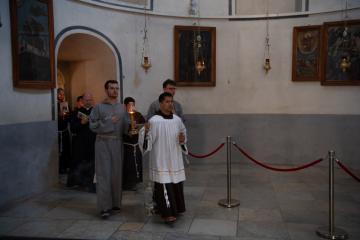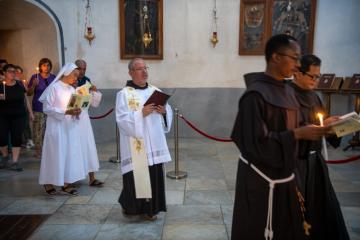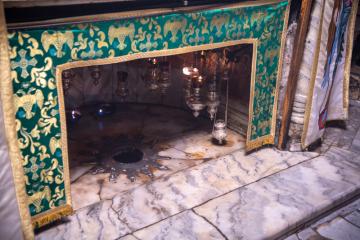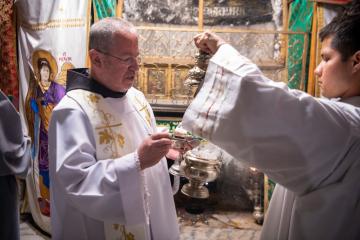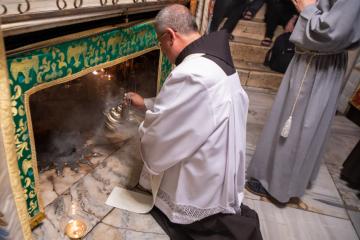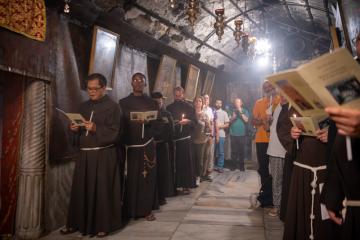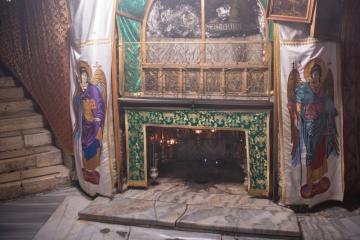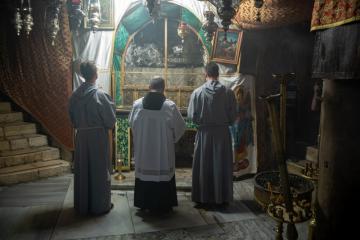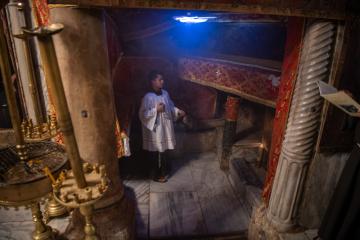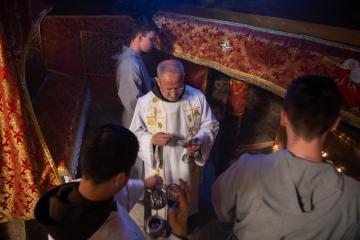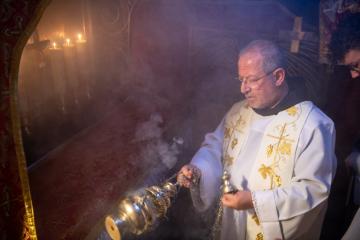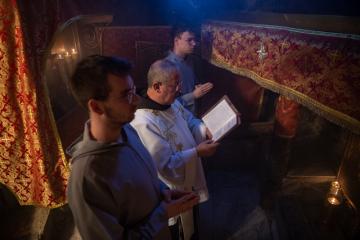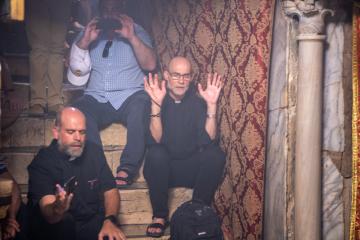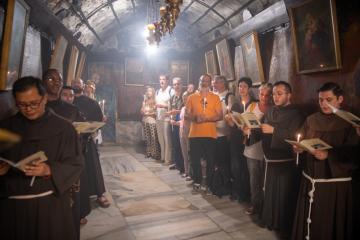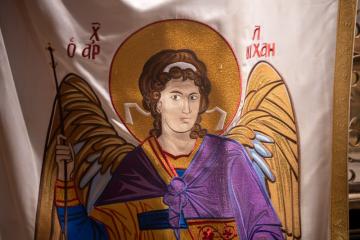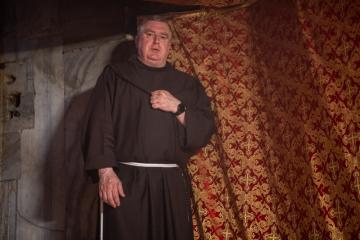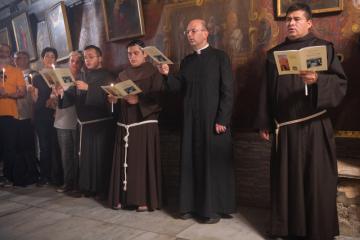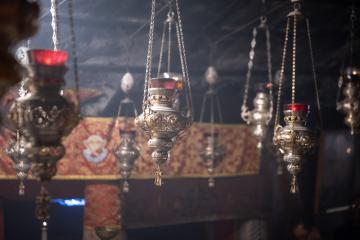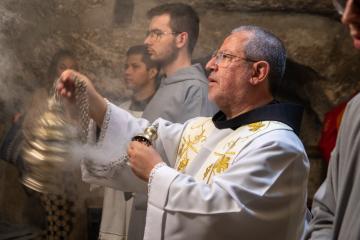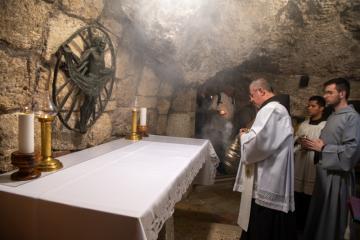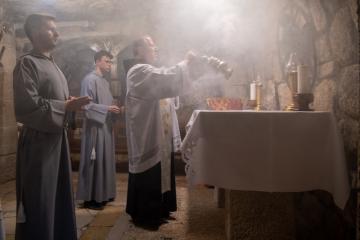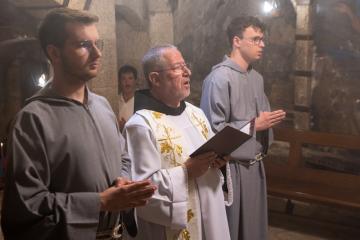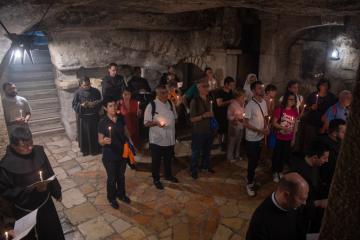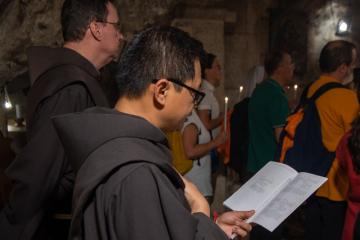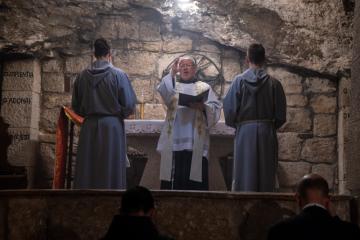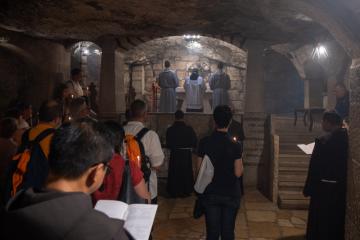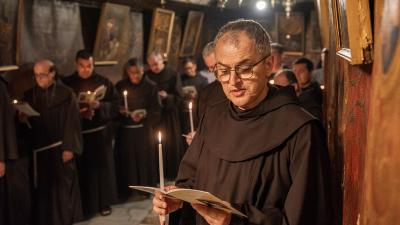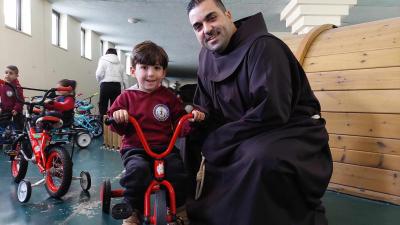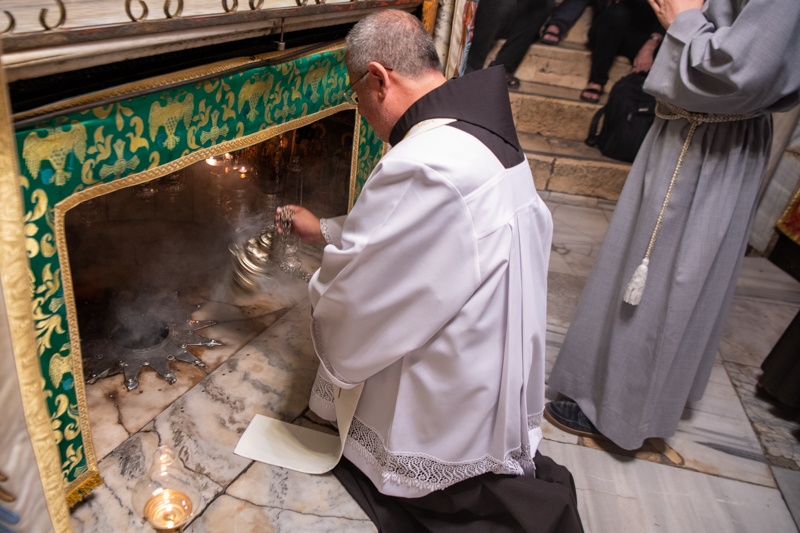
In Bethlehem the friars of the Custody of the Holy Land, in a way similar to the Holy Sepulchre procession, hold another daily procession, which is also old and in which numerous pilgrims take part.
It is the procession in the Basilica of the Nativity: it visits the most important places of the birth of the Saviour, from the grotto where he was born to the grottoes that wind through the underground part of the Basilica.
“Like all the processions in the Holy Places, it came into being with the intention of welcoming pilgrims and taking them along a precise route, to the Holy Place,” fr. Luis Enrique Segovia, guardian of the Franciscan convent of St Catherine in Bethlehem, underlines. “The procession is celebrated from Monday to Saturday at 12.00 noon by the friars of the Basilica, save exceptions due to the celebration of the other communities, the Greek Orthodox and the Armenians, who share this place with us.”
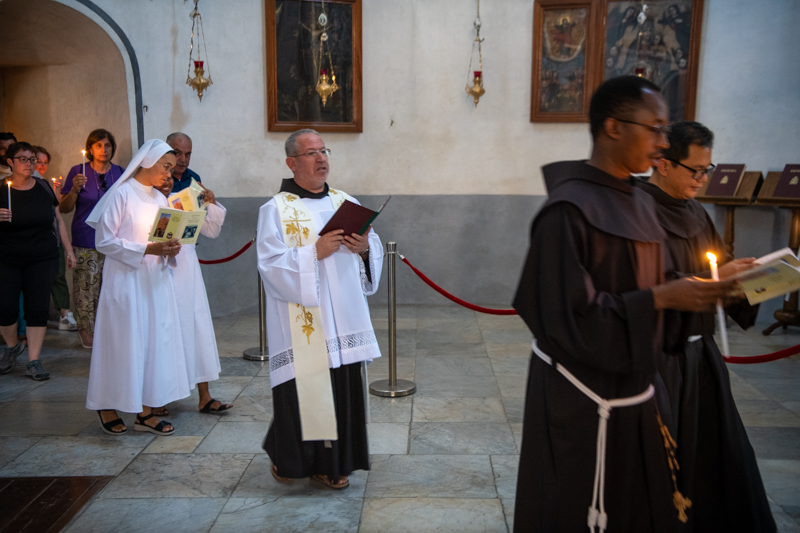
The history of the Procession
The procession was attested as early as 1623 by fr. Tommaso Obicini da Novara (Custos of the Holy Land and liturgist) who modified and updated, in his “Processio celebranda ad sanctissimum nascentis Christi presepe in Betlehem”, the prayer and the hymns of the processional booklet. This allows dating the presence of this rite to the 16th century.
The liturgy of the procession of Bethlehem is based not only on the Gospels, but also on the famous quotations of St Jerome, who lived here for many years and where he could carry on his work of translating the Bible: at every station there is always a sentence on Christmas taken from his letters, from his comments and homilies.
Description of the daily procession
Every day the procession (the Ordo Processionis can be downloaded here) stops to pray at 4 stations and for each of these there is the hymn, the incensation and the Pater-Ave-Gloria is recited.. The faithful, today 30 at the most, are invited to follow the liturgy holding a lit candle along the whole route.
The friar who presides the liturgy (known as the “ebdomadario”, or the person responsible for the worship in a specific week) and the two assistants, together with the turifer who looks after the incense, guide the procession which starts in the church of the Franciscans, dedicated to St Catherine, and go towards the grotto of the Nativity.
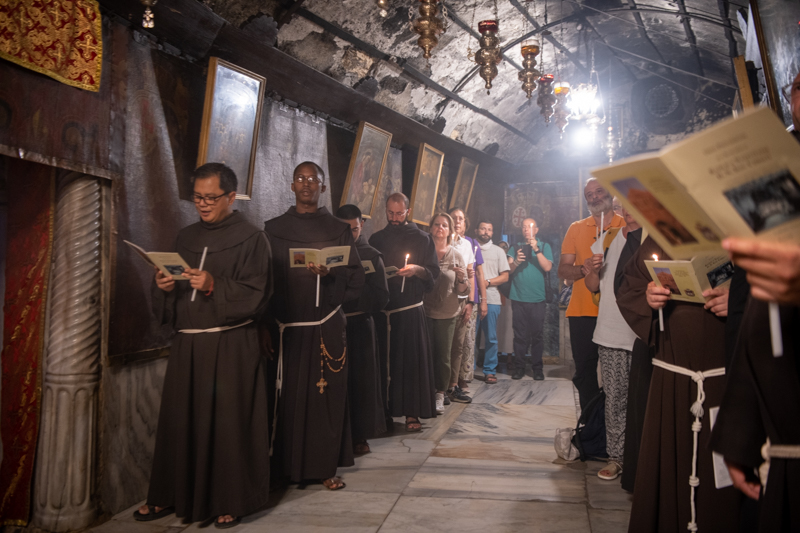
Here there are the first three altars. The first stopping place is the altar of the star, where Jesus was born: the star with the Latin inscription “Hic de Virgine Maria Iesus Christus natus est” recalls here the exact place of the Nativity. Then the procession goes on to the Manger, where Jesus was laid, and exactly opposite there I the altar of the Three Magi, where the Latins celebrate Holy Mass every day.
At the end of the third station, the procession goes out towards a corridor (a private passage of the Latins) which connects the Nativity with the grottoes with the other altars. While in the previous centuries, the procession stopped at each one of these, today only one is chosen day by day as the last place on the itinerary and it is the “ebdomadario” who decides the weekly order to follow.
There are six altars: the one dedicated to St Joseph, to the Holy Innocents, to the oratory and the cenotaph of St Jerome, to St Paula and St Eustochius and the tomb of St Eusebius. On Saturdays, the day traditionally dedicated to the Virgin Mary, the procession ends again in the church with the incensation on the altar of St Catherine.
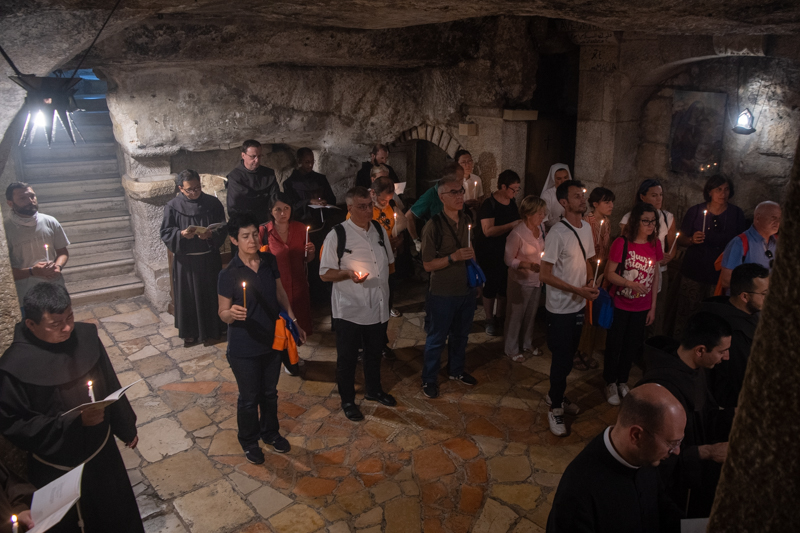
“Sometimes there are groups of pilgrims who want to pray in their own language: but for the statu quo, which is also in force here, the chanting must be in Latin, while the prayers can be recited in different languages,” added fr. Enrique. “In the Basilica the sacristan coordinates the celebrations between the Franciscans, the Orthodox and the Armenians in such a way to allow the pilgrims a more orderly visit of these holy places. This procession is also for them: the route helps them to relive every day the moment and the places of the Birth and of the Manifestation of Our Lord Jesus, and accompanies them, with prayers and chants, in the contemplation of this Mystery.”
The procession follows this route:
1. Altar of the Nativity / 2. The Holy Manger / 3. Altar of the Magi
4: - Altar of St Joseph
- Tomb of the Innocents;
- Tomb of St. Jerome;
- Tomb of Saints Paula and Eustochium
- Tomb of St. Eusebius;
- Altar of St. Catherine.
Silvia Giuliano


